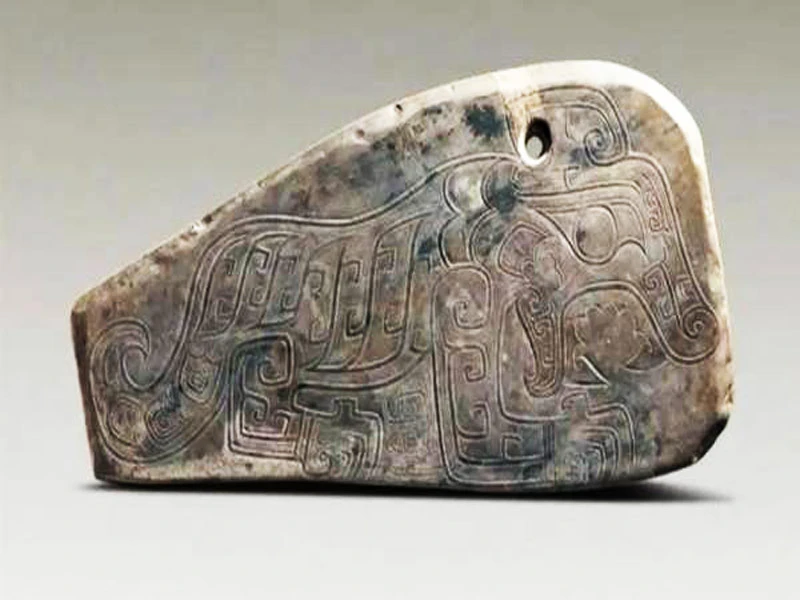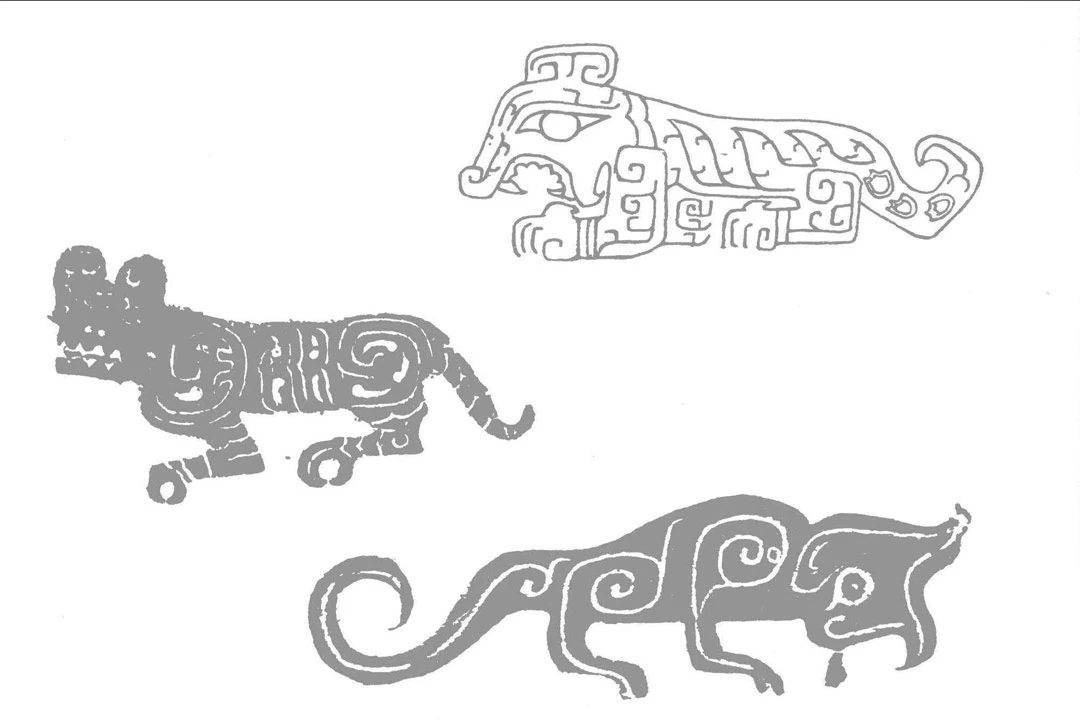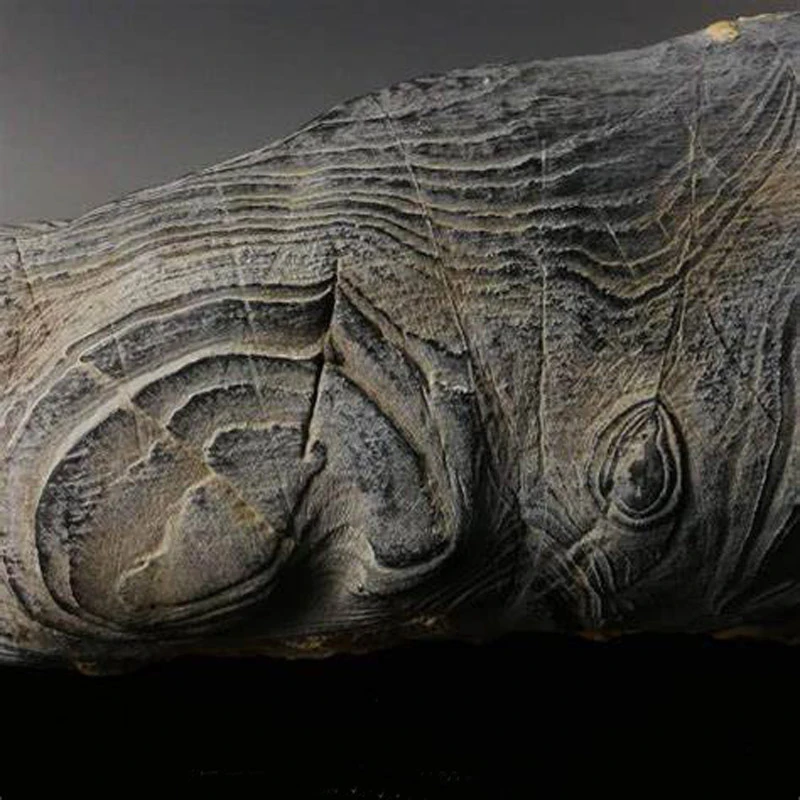In the vast Chinese civilization, there is a musical instrument known as the "king of chimes", which not only carries the glory of ancient music, but also has been given the reputation of a "singing stone" for its unique artistic charm - this is the tiger-striped stone chime. -This is the Tiger Stripe Stone Chime.
Dating back to ancient times, the stone chime, as a crystallization of the wisdom of the ancestors, has been known to perform crisp and melodious melodies with its stone body, which is why it is often referred to as the "music stone" or the "singing stone" in the world. In the profound exhibition hall of the National Museum of China, there is a tiger-striped stone chime, which is honored as "the king of chimes", and it is a witness of history and a treasure of art.
This chime has a flat shape, 84 centimeters long, 42 centimeters wide, and only 2.5 centimeters thick, revealing an extraordinary temperament in its lightness. On it, a tiger leaps onto the stone, its eyes wide open and majestic, as if ready to pounce on its prey, the vividness of its shape is breathtaking. The tiger's body has smooth lines, and the knife work is exquisite, showing the tiger's might and agility to the fullest.

In ancient times, the tiger was not only a symbol of strength, but also the embodiment of mystery and majesty. It is both capable of hurting people and awe-inspiring. This complex interweaving of emotions has made the tiger occupy a pivotal position in culture. Regarding the tiger pattern on the stone chime, there are many different opinions: either it is said to be used for witchcraft, communicating with heaven and earth, human and god; or it is said to be the totem of "Tiger Fang" of the ancient tribe of Gan Poyang, which symbolizes avoiding evil spirits and praying for good luck.
This magnificent stone chime with tiger pattern was unearthed in the tomb of Wuguan Village, Yinxu, Anyang, Henan Province, which has a long history of more than 3,000 years. It is not only a whisper of time, but also a living fossil of ancient music culture.
The origin of the chime can be traced back to prehistoric times, and it may have originally originated from some kind of flaked stone tool, and then gradually evolved into a musical instrument. In ancient China, the chime was an indispensable instrument in ceremonies and rituals, with its clear and melodious sound, attracting the sound of all birds and the dance of all beasts. The Shangshu (The Book of the Shang Dynasty) contains a vivid depiction of a scene in which the first people struck stone chimes and danced together in celebration.
The character "磬" in the oracle bone inscriptions is even more graphic, depicting a picture of a hanging stone piece and a person striking it with a mallet, which vividly reproduces the scene of ancient chime playing. In the Book of Songs, "The drums of the chime are in abundance, and the sound of the pipes is in harmony. The verse "The drums are in harmony, and the sound of the pipes is calm, according to the sound of my chime" further proves the importance of the chime in the Yin and Shang Dynasties.
There are many kinds of chimes, and they can be divided into special chimes and chimes according to the occasions of use and the way of playing. Special chimes, such as the tiger-striped stone chime, are large in size and often used in solemn occasions such as rituals; while the chime is composed of several pieces of chimes, suspended on a frame, and played in a clear and harmonious tone scale, the chime unearthed from the tomb of Zenghouyi in Suixian County, Hubei Province, in 1978, is an outstanding representative of the chime.
The reason why the tiger-striped stone chime can make such a clear sound is due to its unique material - Lingbi stone. Lingbi stone is produced in Anhui Province, and it is one of the four most important stones in China, along with Taihu Lake stone. Since ancient times, Lingbi stone has been known as "Lingbi stone is a wonder in the world, sounding like bronze and coloring like jade". The reason why it can be used as a good material for making chimes is due to the unique density and structure of the stone, which can produce a melodious sound when struck.
In the long history, the tiger striped stone chime has witnessed the change of countless dynasties, experienced the baptism of wind and rain, but still maintains the original innocence and elegance. Its sound, penetrating the dust of the years, across the boundaries of time and space, can still touch people's heartstrings, so that people feel the shock and touch from the ancient times.


